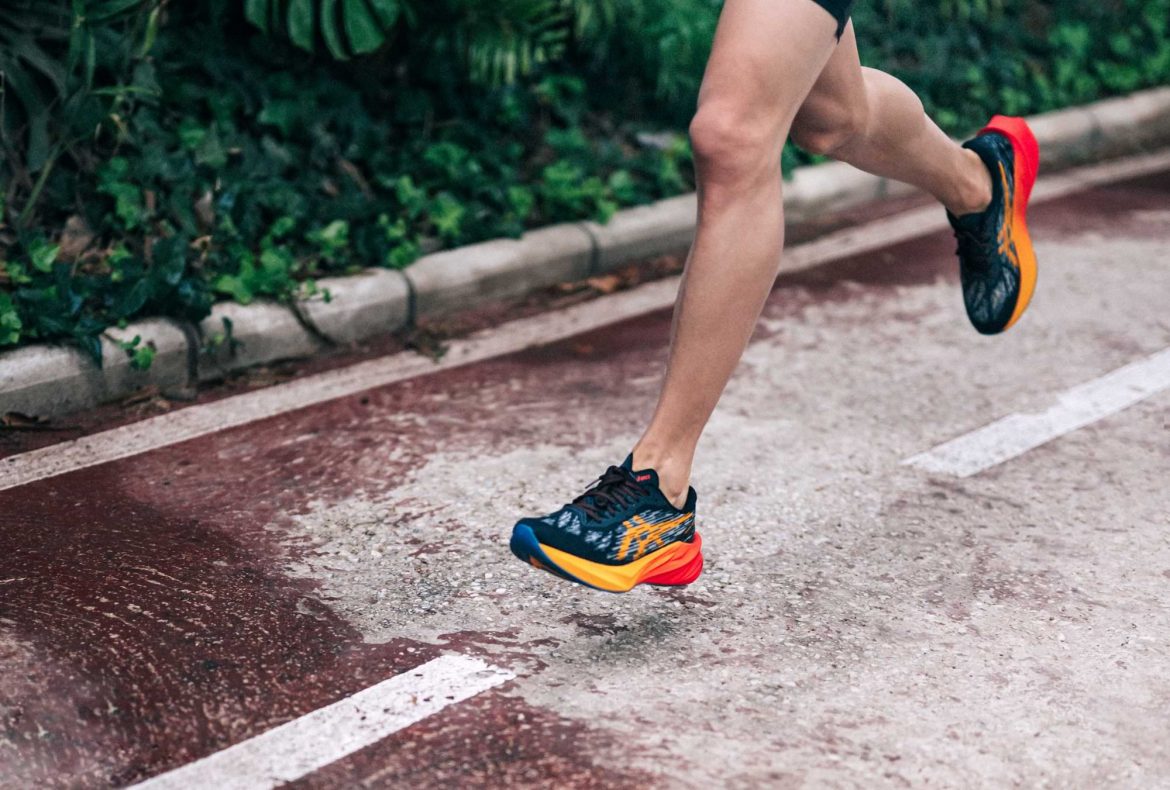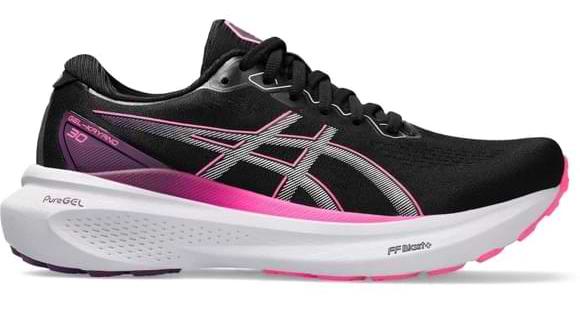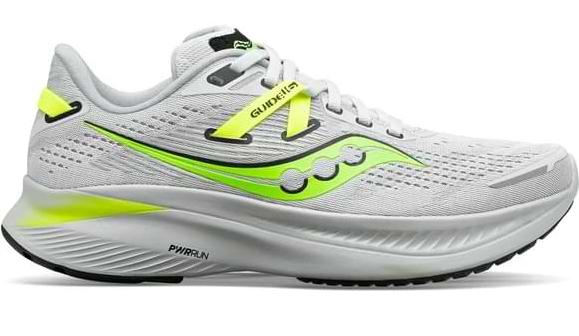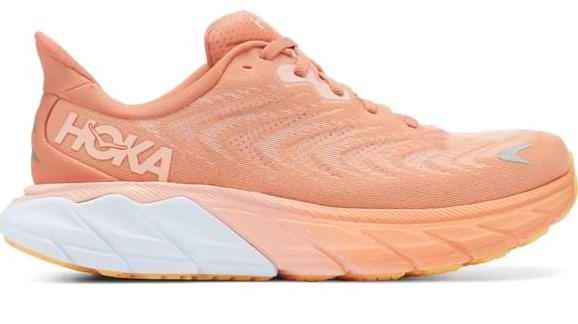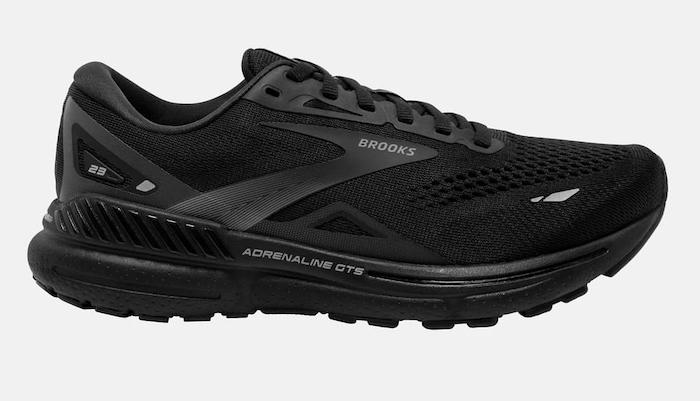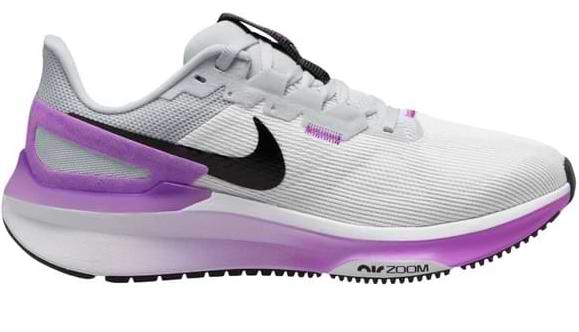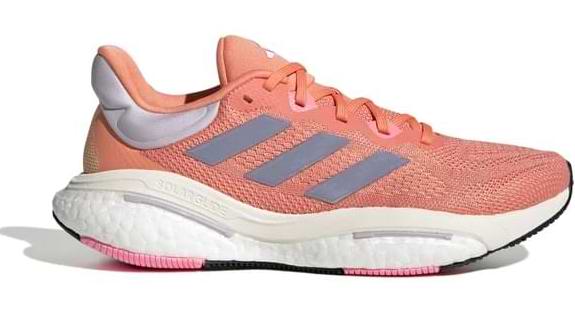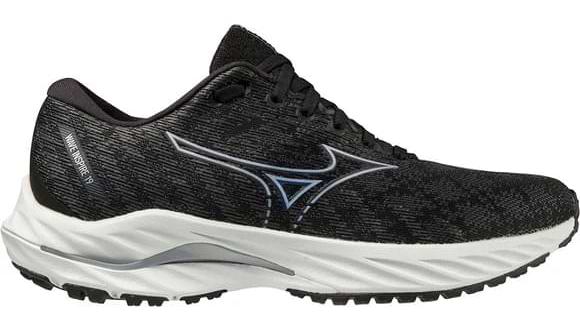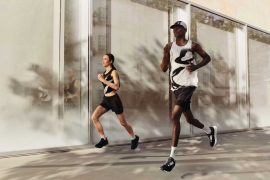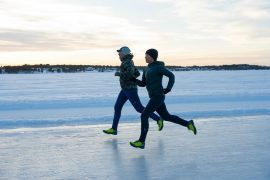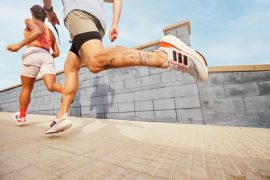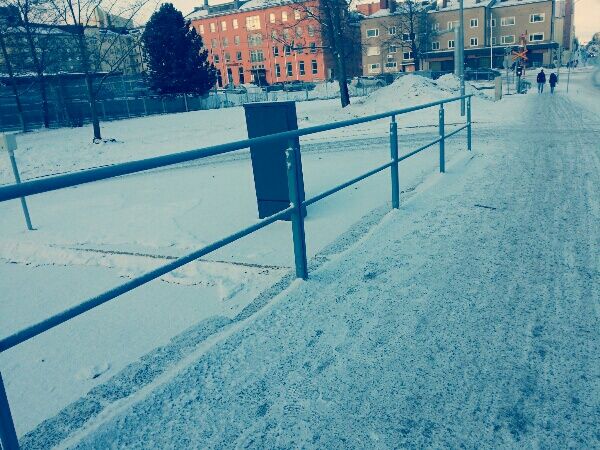When running, the position and movement of the foot play a critical role in how power is distributed through the legs, which can affect both performance and the risk of injury. Pronation is a natural inward rolling of the foot that occurs with each step, but for some, this movement can be excessive and lead to problems if the right footwear is not used. Fortunately, many manufacturers have launched running shoes specifically designed to help with excessive pronation. Here, I bring you the best running shoes for pronation in 2024.
Why do we need anti-pronation running shoes?
But before I move on to the best running shoes for pronation, here is some basic information. Why do we need different running shoes for pronation? Pronation is a natural movement of the foot during walking and running.
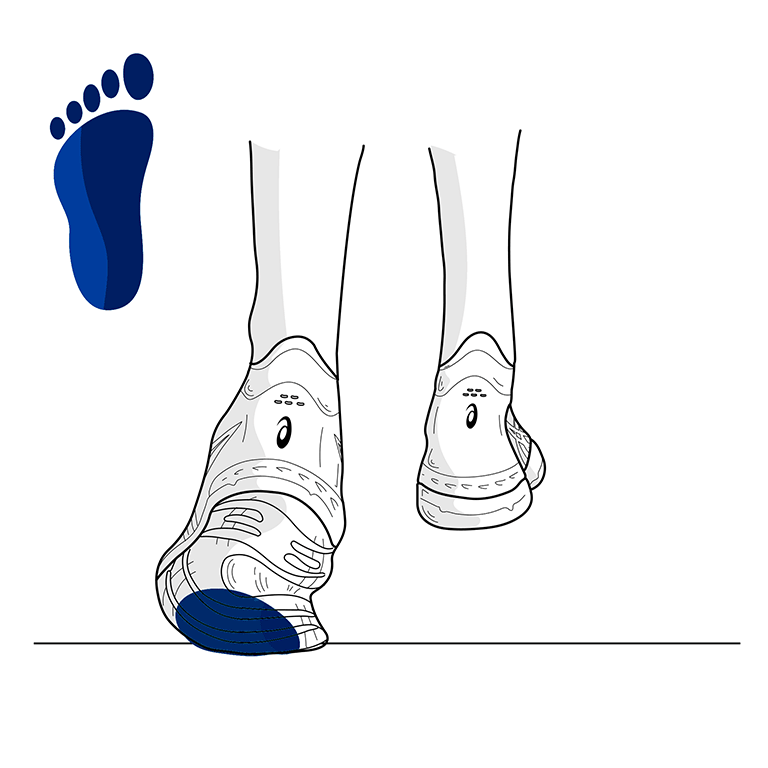
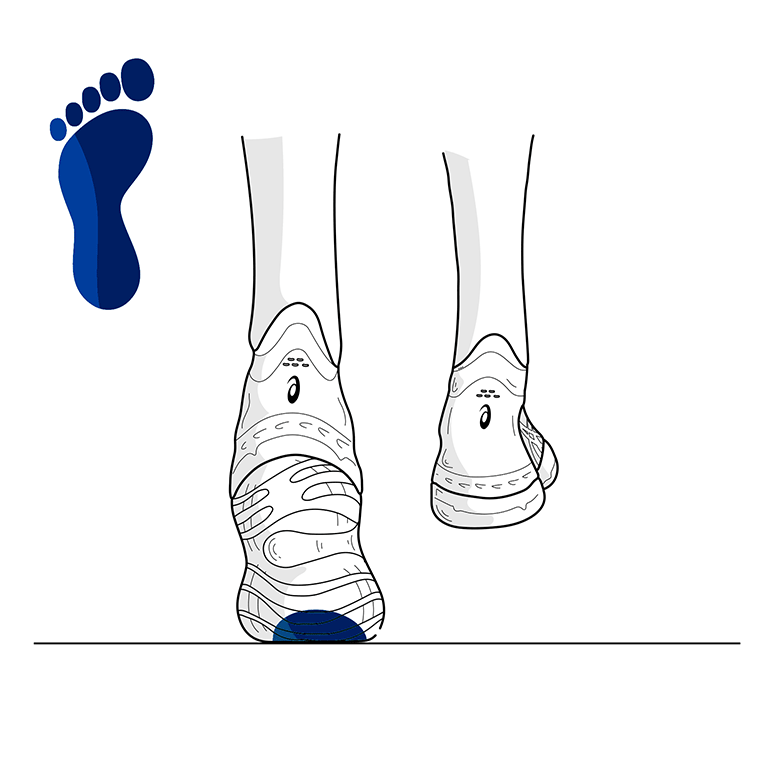
Anti-pronation running shoes are designed to correct these deviations in foot movement, and here are some reasons why they may be necessary:
- Prevent injury: Overpronation can lead to a range of injuries such as shin splints, plantar fasciitis, runner’s knee, and others. Shoes that support and correct the movement of the foot can reduce the risk of these injuries.
- Increased comfort: A shoe that matches your foot mechanics can improve comfort during long runs by reducing unnecessary strain on the foot.
- Improved performance: Correcting improper foot movement can lead to more efficient running and potentially better times.
- Longer shoe durability: If you pronate heavily, it can lead to uneven wear and tear on your running shoes. Shoes designed for pronation can have a longer lifespan because they are designed to handle this specific load.
- Increased stability: Shoes for pronation usually have extra midfoot support or a more stable heel cup to provide a more stable platform when running.
If you’re wondering if you need running shoes for pronation, it’s a good idea to visit a specialized running store where they can analyze your running style and recommend suitable shoes. But you can also analyze the wear and tear on the sole of your previous running shoes to see if you might need anti-pronation running shoes.
Best Running Shoes for Pronation 2024
Pronation is a natural movement of the foot as it rolls inward during a walking or running stroke. For runners who have excessive pronation, specific running shoes can help correct this and provide better support. Here are the best running shoes for pronation in 2024:
1. Asics Gel-Kayano 30
The Asics GEL-Kayano is a true classic among stable running shoes and one of the shoe models that I first started using in my marathon running. This is also the shoe model that is often recommended in sports shops for those who need both good cushioning and support for their feet. In other words, a running shoe that is perfect for the beginner!
Recently the 30th edition in the series was released and in my opinion most of the features have been improved on the model. Above all, a softer cushioning is noticeable and the shoe is also lighter than before.
Gel-Kayano 30 has a 4D Guidance System technology that provides maximum support for the foot where it is needed. It is the new PureGel technology that together with FF Blast Plus Eco provides very comfortable and good cushioning.
If you need stable running shoes against pronation, Kayano is one of the most complete today and this is my choice as the best running shoes against pronation 2024.
👍Advantages: Stable, good cushioning, durable
👎 Cons: Although a lot has been done to make it lighter, it’s still a pretty heavy shoe.
2. Saucony Guide 16
Guide 16 is Saucony’s contribution to antipronation shoes and a model that has really found a home with many runners around the world who need extra support in the running step.
Saucony Guide 16 has great cushioning thanks to its patented midsole in soft PWRRUN foam. Another thing that characterizes the shoe is a 360° fit that moves with you. Thanks to antipronation, you’ll feel more stable than ever and experience a smooth step from heel to toe.
In my opinion, the design is not great, but the running feel and comfort is top-notch!
👍Benefits: Lightweight, comfortable, cushioning
👎 Cons: Not the fastest on the market
3. Asics GT-2000 12
ASICS is a brand that really excels when it comes to running shoes with pronation support. They definitely have some of the best and most popular models on the market – both in Sweden and internationally.
The latest model of the best-selling ASICS GT-2000 was recently released on the market and here are several significant updates. The new ASICS GT-2000 12 is both lighter and has a smoother transition in the running step. The shoe has a 3D GUIDANCE SYSTEM™ that provides stability and it also has a new full-length midsole with FF BLAST™ PLUS ECO cushioning.
I have previously written about the ASICS Gel-Nimbus 25 as one of the running shoes on the market with the best cushioning. ASICS GT-2000 is not far behind with the combination of its GEL™ technology that provides a soft and cloud-like landing. But even on the upper, there are clear improvements with a comfortable jacquard mesh and an AHARPLUS™ heel plug. The sole is also high quality and long-lasting thanks to an AHAR™ LO-HRD sole material.
👍Benefits: Affordable, lightweight and stable
👎 Cons: The sole still feels a bit hard compared to many other running shoe models.
4. Hoka One One Arahi 6
Hoka One One running shoes are known for their running shoes with maximum cushioning. These running shoes are especially suitable for runners with knee problems. In the Arahi 6, Hoka has also added a technology called EVA J-Frame that prevents excessive rolling in the running step. This is Hoka’s contribution to anti-pronation running shoes on the market.
As with other running shoes from Hoka, you will also find Arahi’s so-called Meta-Rocker technology, which is a more rounded rolling sole that drives the running step. This means that you get over to the next step faster.
I have always liked the outsole of Hoka’s running shoes because it provides a good grip even on snow. It feels soft on the landing and protects the legs during mass training. One of the problems has been that the sole wears out easily when running on asphalt, but in recent models, a thin layer has been added to the outsole that makes the shoes last longer.
These are the best running shoes against pronation in 2024 for those who need extra cushioning in their running shoes for knee problems, for example.
👍Advantages: Very good cushioning, durable, good toe space.
👎 Disadvantages: Slightly difficult to get the right lacing.
5. Brooks Adrenaline GTS 23
Brooks is the most popular brand of running shoes in the US along with Nike and among their models, the Brooks Adrenaline GTS is one of the most popular. Adrenaline GTS is made to provide optimal support and stability for runners who overpronate.
One of the key features of the Brooks Adrenaline GTS 23 is their innovative GuideRails technology. These are support mechanisms that are built into the shoe to give the foot a natural path of movement. These shoes help to reduce excessive movement of the foot, which can lead to overpronation.
The newest model has been updated with softer and lighter shock absorption that they have chosen to call DNA LOFT v2.
👍Advantages: Low heel cup, comfortable, good rollover.
👎 Disadvantages: Slightly thick heel cup
6. Nike Air Zoom Structure 25
If you like Nike running shoes, it has always been a challenge to find good models that help stabilize the running stride. The Air Zoom Structure series is the model to go for if you need an anti-pronation running shoe from Nike. This shoe model has a Dynamic Support technology that provides supportive shock absorption.
I myself have had several versions of this shoe model earlier in my life and usually, the problem has been a slightly dumb midsole. But in the newer models, a lot has been done to fix this. Nowadays, the sole is responsive and provides good “bounce” in the step.
The upper of the new Nike Air Zoom Structure 25 is also more comfortable and soft than ever, with the upper made from a breathable mesh upper. The shoe also has a durable outsole that allows the shoes to withstand wear and tear. All this makes this shoe model one of the most affordable on the list of best running shoes against pronation.
👍Benefits: Durable, good suspension, lightweight, affordable
👎 Cons: Still not the most cushioned among running shoes
7. Adidas Solar Glide 6
Adidas has one of the most popular running shoes on the market in the form of the Ultra Boost. However, this is not very stable laterally and therefore not adapted for runners with overpronation. Adidas Solar Glide is then a better alternative because, in addition to Adidas’ comfortable Boost material, it also has a stability rail that prevents pronation in the running step.
The stabilization rail that comes in the form of a “Linear Energy Push system” provides a balanced running step and the molded heel cup also provides a fixed fit for the heel to move freely.
Adidas has always made running shoes with good stretch material on the upper, which allows them to fit even wide feet. With Solar Glide you will also find an outsole in Continental rubber that provides good grip on both wet and dry surfaces.
👍Advantages: Nice cushioning, flexible in the heel area, stable.
👎 Disadvantages: Pretty heavy running shoes
8. Mizuno Wave Inspire 19
Mizuno is a popular brand in the US, and you will find many comfortable, stable running shoes in the range. This includes the Mizuno Wave Inspire 19 which is their antipronation shoe.
I am especially impressed by the comfortable cushioning that in this model offers 2 mm more Energy foam in the midsole than in previous models. You get a springy feel in your stride while a Mizuno Wave plate adds stability. In this model, the inner and outer shape of the plate has been updated and made more anatomically shaped to follow the natural shape of the foot, which prevents the arch from sinking.
In other words, this is one of my favorites among the best running shoes against pronation 2024 for flat feet.
👍Benefits: Nice cushioning, lightweight feel, good grip
👎 Disadvantages: Not so fast
What to Consider When Buying Running Shoes for Pronation
Above you found my choices of best running shoes for pronation 2024. When you suffer from pronation, it means that your foot rolls inwards when it hits the ground during running. This can lead to injury or discomfort if not managed correctly, especially during longer runs or intense exercise.
An effective way to manage pronation is to invest in the right type of running shoes. Here are some tips on what to consider when buying running shoes for pronation:
- Identify your degree of pronation: Everyone has some degree of pronation, but it is important to determine whether you have mild, moderate or severe pronation. This can help you choose the right type of shoe for your needs.
- Shock absorption: Shoes designed for pronation often have extra shock absorption in the midsole, especially in the arch region. This helps stabilize the foot and prevents excessive inward rotation.
- Supportive midsole: A stable midsole can help correct the position of the foot and reduce pronation. Look for shoes with a double-density midsole or with a so-called medial post, which is a harder material inserted on the inside of the midsole.
- Fixed heel cup: A fixed heel cup keeps the heel in place and prevents excessive inward rotation.
- Running analysis: Many running stores offer a free analysis of your stride. By running on a treadmill with video analysis, you can get a better idea of your degree of pronation and what type of shoe is best for you.
- Testing: It is important to try several different models and brands. What feels comfortable and supportive for one person may not feel the same for another.
- Consider longevity: Like all running shoes, the support in shoes designed for pronation will decrease over time. Replace your shoes every 500-800 km depending on your running style, weight and where you run.
- Consult a specialist: If you have had injuries to your foot, knee or hip, or if you experience pain when running, it may be worth consulting a physiotherapist or orthopaedist for advice on suitable footwear and possible treatment.
Frequently Asked Questions – Running Shoes for Pronation 2024
Pronation describes how the foot rolls inwards when walking or running. It is a natural movement that helps to absorb shock. Overpronation means that the foot rolls inwards more than normal when walking or running.
If you overpronate, this can lead to unnecessary strain on your feet, ankles, knees and hips. Shoes designed for overpronation help correct the rolling motion of the foot and provide better support.
One way to find out is through a gait analysis at a sports shop or with a physiotherapist. Even if you look at your old running shoes, you can see if there is uneven wear on the inside of the sole.
No, but people with flat feet have a higher tendency to overpronate. However, even people with a normal arch can overpronate.
In general, it is recommended that you replace your running shoes after about 600-800 kilometers. But this can vary depending on running technique, weight and terrain.
Many major running brands such as ASICS, Brooks, New Balance and Saucony offer models designed specifically for overpronation.
Absolutely, many people find that these shoes provide good support even for everyday walking, especially if they have problems with overpronation.
Yes, women’s models are often designed with women’s biologically different biomechanics in mind, such as narrower heels and wider forefeet.
It is very important if you want to avoid injury and improve your running technique. The wrong shoes can cause problems further up your body, such as knee and hip pain.
Yes, for some people orthopaedic inserts can provide extra support and correction. However, a specialist should be consulted when combining inserts with running shoes to ensure proper fit and function.

